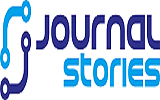CITATION MANAGEMENT :
AUTHOR GUIDELINES
Instructions For Authors In The Keluarga Sehat Sejahtera Journal of Universitas Negeri Medan
Article written for the journal includes research result, education, learning, science, culture, technology, language and arts, social phenomena, and public service. The manuscript is typed in Microsoft Word, Times New Roman, font size 12 pts, with spaces 1.15, printed on A4 paper, and the maximum number of pages are 20 pages, with margin: left4, right 3, top 3, bottom 3. The manuscript should be mailed as an attachment to: ksspusdibangks@gmail.com, and register to the online registration and upload the article to jurnal.unimed.ac.id/2012/index.php/jkss/index website.
- Articles are written in Indonesian Language with the United Kingdom Article Systematics which includes: title, author's name, accompanied by abstract keywords, introduction, methods, result and discussion, conclusion, as well as a list of references.
- The title of article in Indonesian Language should not be more than 20 words, whereas the title in English should not be more than 19 words. The title is printed with capital letters in the Middle, with font size 12 pts.
- The name of the author of the article is listed with no academic degree, accompanied with the institution of origin, and placed under the article title. If the manuscript was written by a team, the editor only relate to the principal author or authors whose names are listed first. Lead author should include an e-mail correspondence or address.
- Abstract and keywords are written in English and Indonesian. The font is Times New Roman, size 11 pts, with 1 spacing. The length of each abstract are 75-100 words, while the number of keywords are 3-5 words. The abstractcontains title, objectives, methods, and results of the research.
- The introduction contains background, the context of the research, the results of a literature review, and research purposes. All parts of the introduction is presented in the form of integrated paragraphs, with 15 – 20% of the total length of the article.
- The method contains an exposure in the form of paragraphs, data sources, data collection, and data analysis done with 10-15% of the total length of the article. The exposure results and discussion are 40-60% of the length of the article.
- The results of the study contains the results of exposure analysis related to the research question. Any research results should be discussed. It also contains discussion of the definition of the results and comparison with theory and/or research results.
- The conclusion section contains research findings in the form of answers to research or the core of the results discussion. Conclusions are presented in the form of a paragraph.
- References list contains only the sources referenced, and all the sources consulted should be listed in the list of references. References source in the form of primary library (research articles in journals or research reports), and other sources (the sources of the book in which 80% comes from the issue of the last 10 years, internet, etc.).
- Referrals and referral techniques using bracket excerpts (surname, year). An inclusion of a direct quote sources should be accompanied by a description of the page number where the quote located. Example: (Davis, 2003:47).
- Each prospective authors should refer to articles that have been published in the Elementary School Journal PGSD Unimed FIP at least 3 posts. Here are the excerpts of the ordinance that are required:
Book:
Anderson, D.W., Vault, V.D. & Dickson, C.E. 1999. Problems and Prospects for the Decades Ahead: Competency Based Teacher Education. Berkeley: McCutchan Publishing Co.
A collection of articles:
Saukah, A. & Waseso, M.G. (Eds.). 2002. Menulis Artikel untuk Jurnal Ilmiah (Edisi ke-4, cetakan ke-1). Malang: UM Press.
Article in the book collection of articles:
Russel, T. 1998. An Alternative Conception: Representing Representation. Dalam P.J. Black & A. Lucas (Eds.), Children’s Informal Ideas in Science (hlm. 62-84). London: Routledge.
Article in a journal or magazine:
Kansil, C.L. 2002. Orientasi Baru Penyelenggaraan Pendidikan Program Profesional dalam Memenuhi Kebutuhan Dunia Industri. Transpor, XX (4): 57-61.
Article in the newspaper:
Pitunov, B. 13 Desember, 2002. Sekolah Unggulan ataukah Sekolah Pengunggulan? Majapahit Pos, hlm. 4 & 11.
Writing/news in the newspaper (without the name of the author):
Jawa Pos. 22 April, 1995. Wanita Kelas Bawah Lebih Mandiri, hlm. 3.
Official documents:
Pusat Pembinaan dan Pengembangan Bahasa. 1978. Pedoman Penulisan Laporan Penelitian. Jakarta: Depdikbud.
Undang-undang Republik Indonesia Nomor 2 tentang Sistem Pendidikan Nasional. 1990. Jakarta: PT Armas Duta Jaya.
Book translation:
Ary, D., Jacobs, L.C. & Razavieh, A. 1976. Pengantar Penelitian Pendidikan. Terjemahan oleh Arief Furchan. 1982. Surabaya: Usaha Nasional.
Thesis, Thesis, Dissertations, Research Reports:
Kuncoro, T. 1996. Pengembangan Kurikulum Pelatihan Magang di STM Nasional Malang Jurusan Bangunan, Program Studi Bangunan Gedung: Suatu Studi Berdasarkan Kebutuhan Dunia Usaha Jasa Konstruksi. Tesis tidak diterbitkan. Malang: PPS IKIP MALANG.
Conference papers, workshops, upgrading:
Waseso, M.G. 2001. Isi dan Format Jurnal Ilmiah. Makalah disajikan dalam Seminar Lokakarya Penulisan Artikel dan Pengelolaan Jurnal Ilmiah, Universitas Lambungmangkurat, Banjarmasin, 9-11 Agustus.
Internet (individual work):
Hitchcock, S., Carr, L. & Hall, W. 1996. A Survey of STM Online Journals, 1990-1995: The Calm before the Storm, (Online), (http://journal.ecs.soton.ac.uk/survey/survey.html, diakses 12 Juni 1996).
The Internet (article in the journal online):
Kumaidi. 1998. Pengukuran Bekal Awal Belajar dan Pengembangan Tesnya. Jurnal Ilmu Pendidikan. (Online), Jilid 5, No. 4, (http://www.malang.ac.id, diakses 20 Januari 2000).
Internet (discussion):
Wilson, D. 20 November 1995. Summary of Citing Internet Sites. NETTRAIN Discussion List, (Online), (NETTRAIN@ubvm.cc.buffalo.edu, diakses 22 November 1995).
The Internet (personal mail):
Naga, D.S. (ikip-jkt@indo.net.id). 1 Oktober 1997. Artikel untuk JIP. E-mail kepada Ali Saukah (jippsi@mlg. ywcn.or.id).
13. The procedures for the presentation of quotations, references, tables, and images follow the provisions in ordinance which are used on Public Handbook Spelling enhanced Indonesian Language and terms are standardised by the language centre.
14. All manuscripts examined anonymously by bebestari partners (reviewers) appointed by the editor according to areas of expertise. Author of the article is given a chance to make improvements (revisions) of the manuscript on the basis of recommendations/suggestions from the partner bebestari or editor. The certainty of the loading or the rejection of the manuscript will be informed in writing.
15. Everything related to licensing or quoting misconstructed the use of computer software for the creation of a script or other related to intellectual property conducted by the author of the article, the following legal ramifications that may arise as a result, become the responsibility of the author of the article.
16. As a prerequisite for the processing of the article, the article's contributors should be obliged as customers for at least one year (the publication of the journal for the 1st volume of two numbers). The author of that article contained is obliged to pay contributions to the cost of printing for each title. Articles that are not loaded will not be returned, unless at the request of the author.
17. For authors who are teachers, must attach an affidavit that has been guided in writing and signed by the supervisor. The supervisor can be lecturer of Unimed or school superintendent. The delivery of affidavit can be done as attachment to mail address: ksspusdibangks@gmail.com


_(1).png)




















